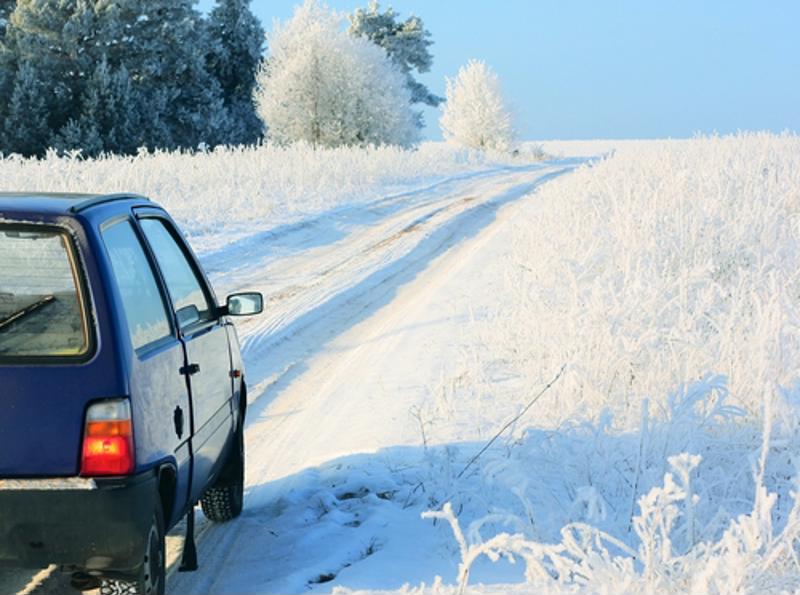Driving through the harsh conditions of the winter can be hazardous and intimidating, especially when there's snow and ice involved. Unfortunately, the treacherous weather can lead to unstable driving, which can put you into a snow bank. Though you may not be able to stop the blizzards from taking over the roads of the cold months, there are still ways to prepare yourself and ensure a safe and stable drive. Strengthen the safety for you and your passengers this winter with some of these helpful driving safety tips.
Give your car a maintenance check
Though you may not feel like spending the money, it's always crucial to give your car a check-up before the first big blizzard rolls in. Car Talk suggested getting your bad hoses, belts, water pumps and spark plug wires replaced before it's too late. Also, make sure your battery, charging system and tire pressure are all in great condition. The source said tire pressure can drop by one pound per ten degrees in temperature, so making sure the pressure is adequate can help your car's handling on the slick roads. Standing roadside for a tow truck during a winter storm doesn't exactly sound like much fun, so spend your money wisely and get the dirty work taken care of early.
Get enough rest before your drive
This rule goes for all driving, but it's especially important to be well-rested before driving in the snow. The American Automobile Association Exchange said to avoid driving while you're fatigued to reduce driving risks in bad weather. Traveling in severe weather takes lots of concentration and patience, so it's important to be of a clear, straight mind while driving. Make sure you get a full night's sleep if you're aware of a blizzard happening during your next commute.
 Always prepare yourself for your commute if you know the roads will be slick.
Always prepare yourself for your commute if you know the roads will be slick.
Allow enough time for your commute
Driving through a blizzard isn't nearly as simple as driving on a clear, sunny day. The U.S. Occupational Safety and Health Administration suggested planning your route to prepare yourself for your commute during a winter storm. Check the weather in advance to figure out the best time for travel and map out the direction you will be headed. If there is an alternate route that seems safer than your usual one, consider taking the clearer course. Be sure to let others know the route you decided to take and your expected time of arrival to ensure your safety.
"Let others know your estimated time of arrival before leaving."
Drive slowly and stop as little as you can when possible
When it's time to hit the road, driving slow is important when the roads are slick. AAA said applying the gas slowly when accelerating is the best way to gain traction and avoid skidding on ice. Take your time, because everything takes longer for everyone on the snow-covered roads. This includes all aspects of driving: accelerating, stopping and turning.
When it comes to stopping, avoid it if possible – but certainly not at stop signs or stop lights. The amount of inertia it takes to start moving after stopping can play a big role in how smooth your drive can be, so roll through the traffic patterns as much as you can.
Always keep a full gas tank – or close to one
Running out of gas during a winter storm can be a huge issue. Not only will it leave you stranded, but it also takes away your source of heat. It's crucial to keep your gas tank as close to full as possible during winter storms to avoid running out of gas. Play it safe this winter and keep an extra gas can in your truck in case of an emergency. Nobody wants to stand roadside waiting for a tow-truck on a harsh, cold winter night.
Consider keeping a bag of sand in your trunk
If you have a rear wheel drive vehicle, you may want to consider putting a bag of sand in your car behind the rear axle. The weight of the sand bag can help increase the traction of your rear tires, which can be helpful when driving on extremely harsh and snowy roads. Car Talk said the rear axle is located toward the front of the trunk, right between the two rear wheels.
Check out NJ Auto Junction for a variety of great quality pre-owned car to get you through this winter.



